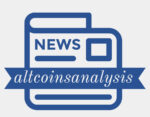In contrast to conventional blockchains, IOTA’s Tangle allows for simultaneous processing, reduces costs, and removes the need for intermediaries. Toshiba employs cryptographic validation and decentralized decision-making strategies within a Directed Acyclic Graph (DAG) structure to address potential risks. They have also filed a new patent, US2025038975A1, which outlines a self-supervised multi-agent collaboration system utilizing IOTA’s DAG technology. The recently unveiled patent outlines the application of directed acyclic graph (DAG) based distributed ledger technology (DLT) in multi-agent systems (MAS). It will enhance trust, safety, and efficiency among diverse robotic agents. Toshiba has embraced IOTA’s technology. According to the patent document, multi-agent systems are increasingly becoming autonomous, requiring different types of robots to work together efficiently. The robots, on the other hand, are produced by different companies, which complicates their ability to work together seamlessly and safely. The patent details a technique that enables robots to operate transparently and perform their functions correctly, even in the face of potential security challenges like defective components or unauthorized access. Toshiba employs a Directed Acyclic Graph (DAG) framework, particularly IOTA’s Tangle, to confirm and monitor the execution of tasks, as mentioned in previous reports. The patent states that each autonomous robot in the group is designed to, after initializing the Directed Acyclic Graph (DAG), solely provide completion details to the auditor. These details are meant to be added to completion information that has already been physically and cryptographically verified by the robot. This ensures that all robotic agents within the system operate under a framework where their actions are independently confirmed and securely recorded. In contrast to traditional blockchain systems that primarily rely on Proof of Work (PoW) models, DAG-based architectures like IOTA enable parallel and continuous processing, reduce costs, and eliminate the need for middlemen.







